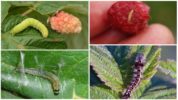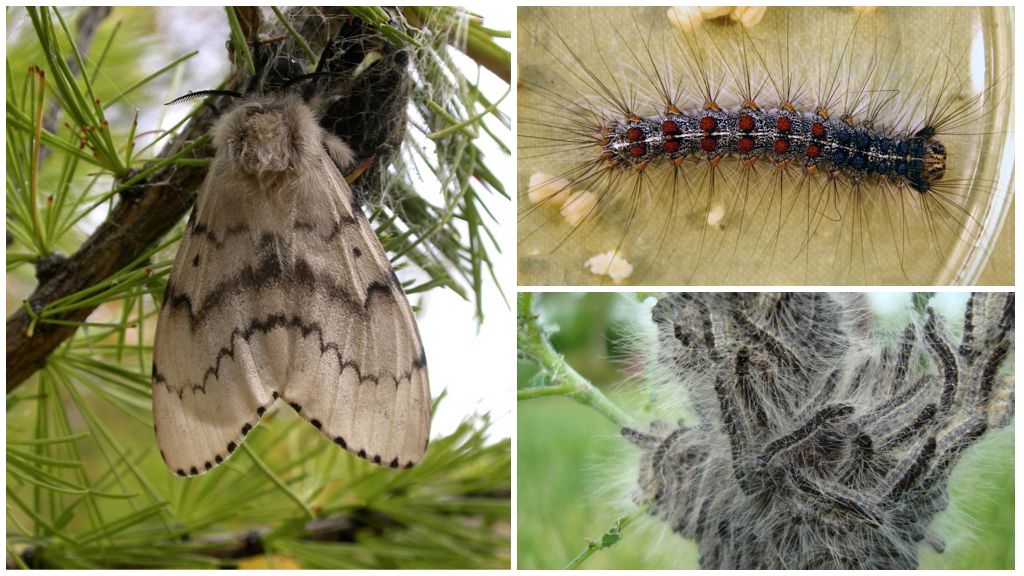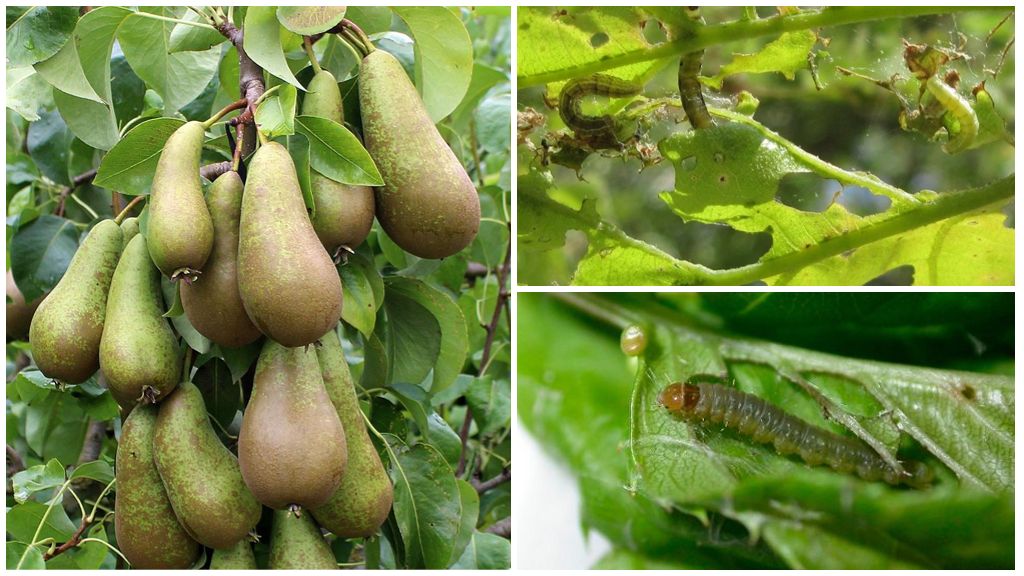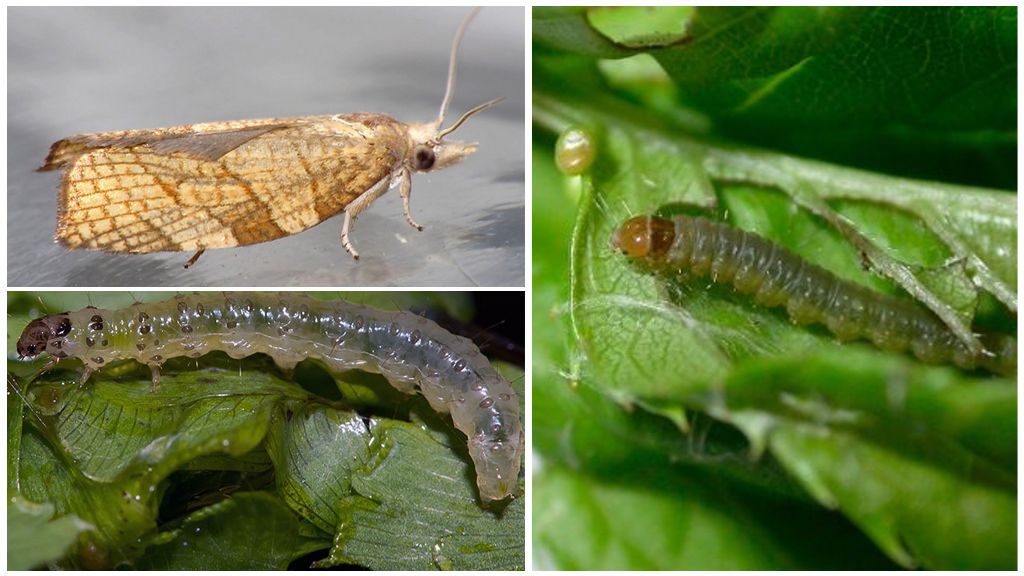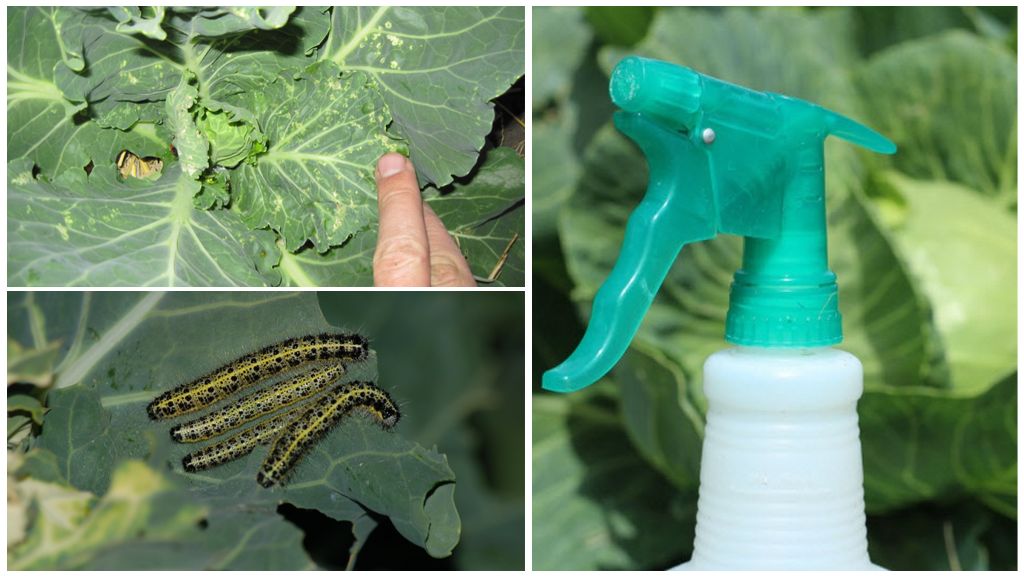- Raspberry caterpillars
- Track Control Tools
- Folk methods of fighting caterpillars
Raspberry caterpillars are one of the most common problems due to which the yield of berries is greatly reduced. There are a lot of pests eating fruits and leaves, but the most popular are the glass-case and the stem fly. Struggle to preserve the crop should be as pests appear, and prevention must be made an annual mandatory procedure.
What pests are on raspberries
Soft leaves, juicy berries and plant growth characteristics are favorable factors for the development of various pests on them. Many butterflies and caterpillars love to enjoy the bush.. If you ignore them and do not take any measures, then the number of crops can seriously decrease.
The most popular raspberry pests:
- Raspberry beetle. Its appearance leads to a decrease in productivity, the presence of worms in berries and leaf spoilage. The adult beetle has a gray torso; the caterpillars have a light torso. Adults eat flowers on the bushes, and the larvae feed on buds.
- Stem fly. Pest that appears in May-June. He lays eggs in the leaves and tops of young stems. Hatched caterpillars eat foliage and cause it to dry.
- Stem gall midge. An adult looks like a small mosquito with transparent wings. Lays eggs on stems. A black and orange caterpillar on raspberries can invade the stem and eat it from the inside.
- Glass Shaker. Caterpillars use the core of the stems as food. As a result, young shoots dry and disappear. Females masonry directly next to the raspberry stalks.
On a note!
Photos of caterpillars on raspberries help identify pests faster. In order to effectively deal with them, the life cycle of each insect should also be considered.
Fighting with a raspberry leaflet and other pests must be done in a timely manner in order to preserve the crop and protect the family from chemicals. Leafworm affects almost all fruit crops in the garden: apple trees, pearscurrant gooseberry, viburnum and even roses and other flower bushes. For treatment, you should choose universal preparations of contact or systemic action.
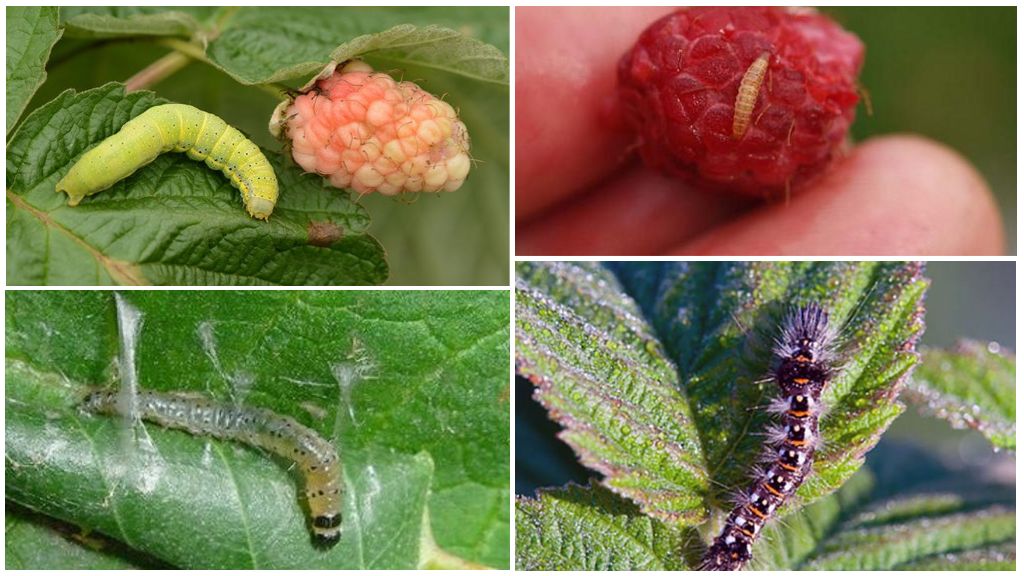
When and how to deal with pests with chemicals
Track Fightflies and bugs on raspberries can occur in several stages. The chosen drug will largely depend on the degree of infection and the time of year. Raspberry bushes can be processed in spring, summer or autumn.
Important!
It is forbidden to use chemicals against pests during flowering plants.
The complexity of getting rid of pests lies in the fact that the raspberry berry does not have a dense peel that could protect it from chemicals. In this case, the risk of poisoning a person significantly increases. To protect yourself and your family, you should carefully read the instructions and comply with the time periods specified in the instructions for use of reagents.
When choosing an effective method, how to deal with caterpillars on raspberries, you should take into account the characteristics of each drug and the degree of infection of plants.Processing bushes and soil is allowed only in spring or autumn. Chemistry is allowed before the first inflorescences open on the bushes.
How to process raspberries from caterpillars:
- Karbofos. An effective and inexpensive tool. Available in the form of granules, powder, tablets and emulsions. To protect raspberries, it is necessary to prepare a solution. To do this, dilute 90 g of the product in a bucket of water and treat the bushes. Price per pack 30 g from 50 rubles.
- Spark. Permethrin-based drug. Available in several variations from classic to enhanced action. Sold in the form of emulsions or tablets. Just apply. The price is from 25 rubles.
- Metaphos. Light gray powder or emulsion. The active substance is dimethylnitrophenylthiophosphate. It has a contact effect. It has a high toxicity. Resistant to high ambient temperatures. The price is 30 rubles per ampoule.
Also used Confidor, Colloidal sulfur, Tsidal, Fufanon. Of the biological products, Guapsin and Bitoxybacticillin are highly effective.

Feedback
We always use Karbofos from many pests in the country. Inexpensive and very effective tool. We use it infrequently, as we try to prevent the development of pests or use proven folk remedies. But with a strong infection, we always spray the cultures of Karbofos. Helps a lot.
Katerina, Kharkov
Feedback
I'm afraid to use chemistry at any stage of cultivating garden crops. But last summer, shrubs simply attacked the caterpillars and folk remedies were powerless. A neighbor recommended Guapsin. This is a biological drug that has virtually no negative effects. I bought a bottle of 500 ml for 100 rubles.
Arina, Liski
Folk remedies
Simple folk remedies will also help get rid of pests on raspberries. For this, powders or herbal infusions are used.
The following recipes have proven themselves well:
- Soda. Its disinfecting and bactericidal action helps get rid of insects and bacteria on shrubs. For use, dissolve 50 mg per bucket of water and treat the bushes.
- Tobacco. Pour 1 cup dry tobacco with 2 liters of water. Boil the broth for an hour, then cool. For processing, the resulting concentrate should be diluted with pure water in a ratio of 1: 3. Spray the bushes. You can also use the prepared product to water the ground before digging 2 times a year.
- Infusion of tansy. A bucket of water will require 300 g of dry plant or a third of a bucket of fresh inflorescences. Pour water and insist for at least 24 hours.
- Potassium permanganate. It will help to avoid the appearance of caterpillars in the spring. To prepare the solution, stir 10 crystals of potassium permanganate in a bucket of water. Spray the bushes.
- If a leaf raspberry wound up on raspberries, dry mustard will help. Mix 100 g of powder with boiling water until a thick sour cream. Then add the pulp to a bucket of water and process the bush.

Feedback
For the prevention of caterpillars on raspberries and currant I use a soda solution. I spray it once a week. Safe and very effective. I resort to chemicals only in extreme cases.
Angelina, Moscow
Feedback
I tried to plant mustard in a bucket of water for processing garden shrubs. I did not notice the effect. If there are less caterpillars, then not by much. I had to buy special insecticides, and only then was the result.
Elena, Mytishchi
How to prevent infection
It is always easier to prevent the development of pests on raspberries than to suffer crop losses later. To protect raspberry bushes, you should follow these recommendations:
- Pruning. Every year before sending plants for wintering, it is necessary to trim dry and damaged branches.
- Thin bushes in spring. This will improve air circulation in the root system.
- Keep clean on the site. All garbage and weeds should be immediately taken out of the garden and burnt.Torn plants lying on the beds contribute to the spread of the spider mite.
- Keep the soil loose. To do this, throughout the entire growth of raspberries periodically loosen the earth.
Important!
Affected stems should be cut to the root. The exception is parts infected with stem gall midge. In this case, pruning should be performed slightly lower than the characteristic swelling detected.
Regular vegetation control can reduce the number of pests on raspberries. To do this, once a week, it is necessary to carefully inspect each bush and, if diseases or pests are detected, immediately remove the affected parts. If various harmful insects are often found on the site, you can treat the plantings with special chemicals once a year for prevention. This is best done in the spring with the help of Karbofos or Actellik.
To save the crop from the raspberry beetle, I cover the bushes with non-woven material for the period of bud formation. When the flowers begin to blossom, the protection is removed.
Thus, getting rid of caterpillars on raspberries will not be easy. In order to preserve the harvest as much as possible and not to overdo it with chemicals, it is better to regularly carry out simple methods of prevention. Site cleanliness and plant ripening control will guarantee the absence of pests and a generous harvest of not only raspberry berries, but also other crops.
